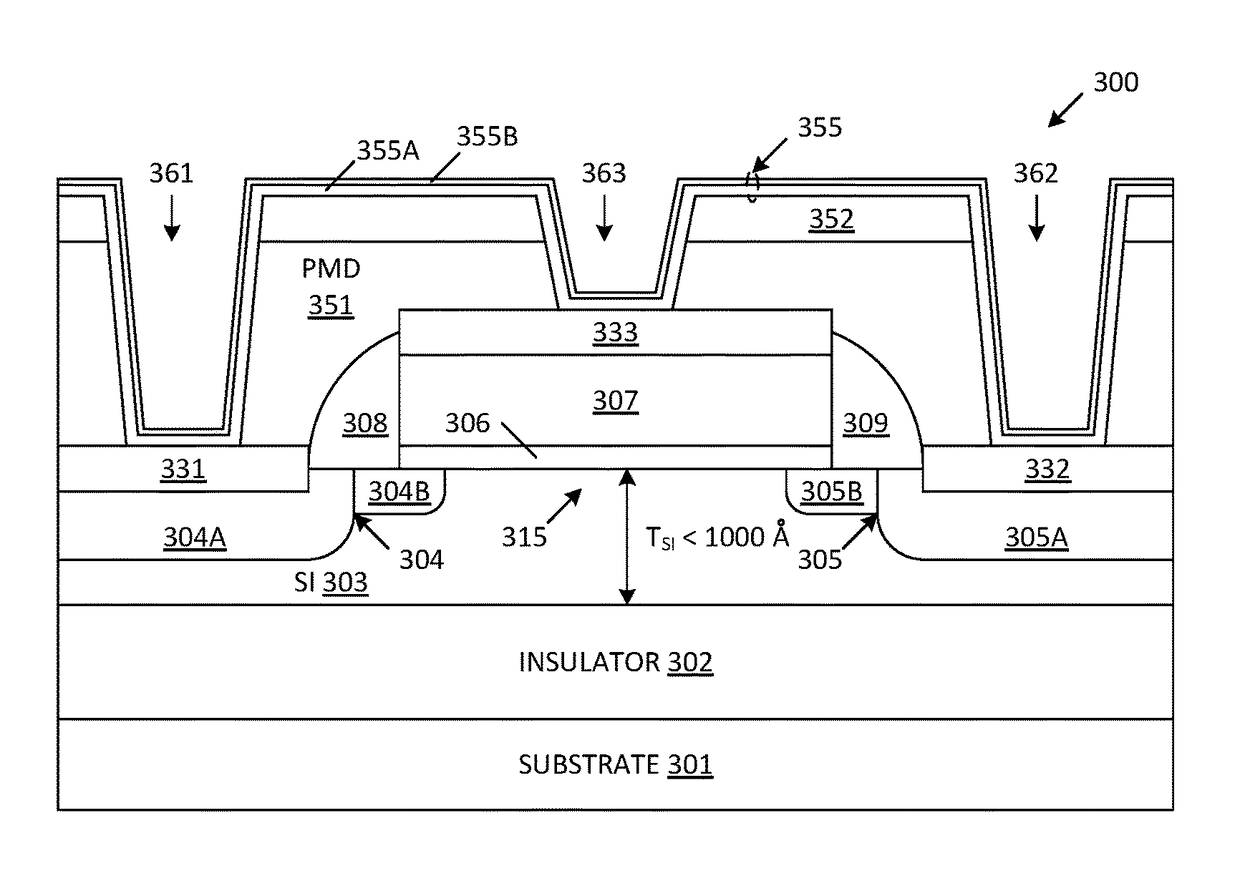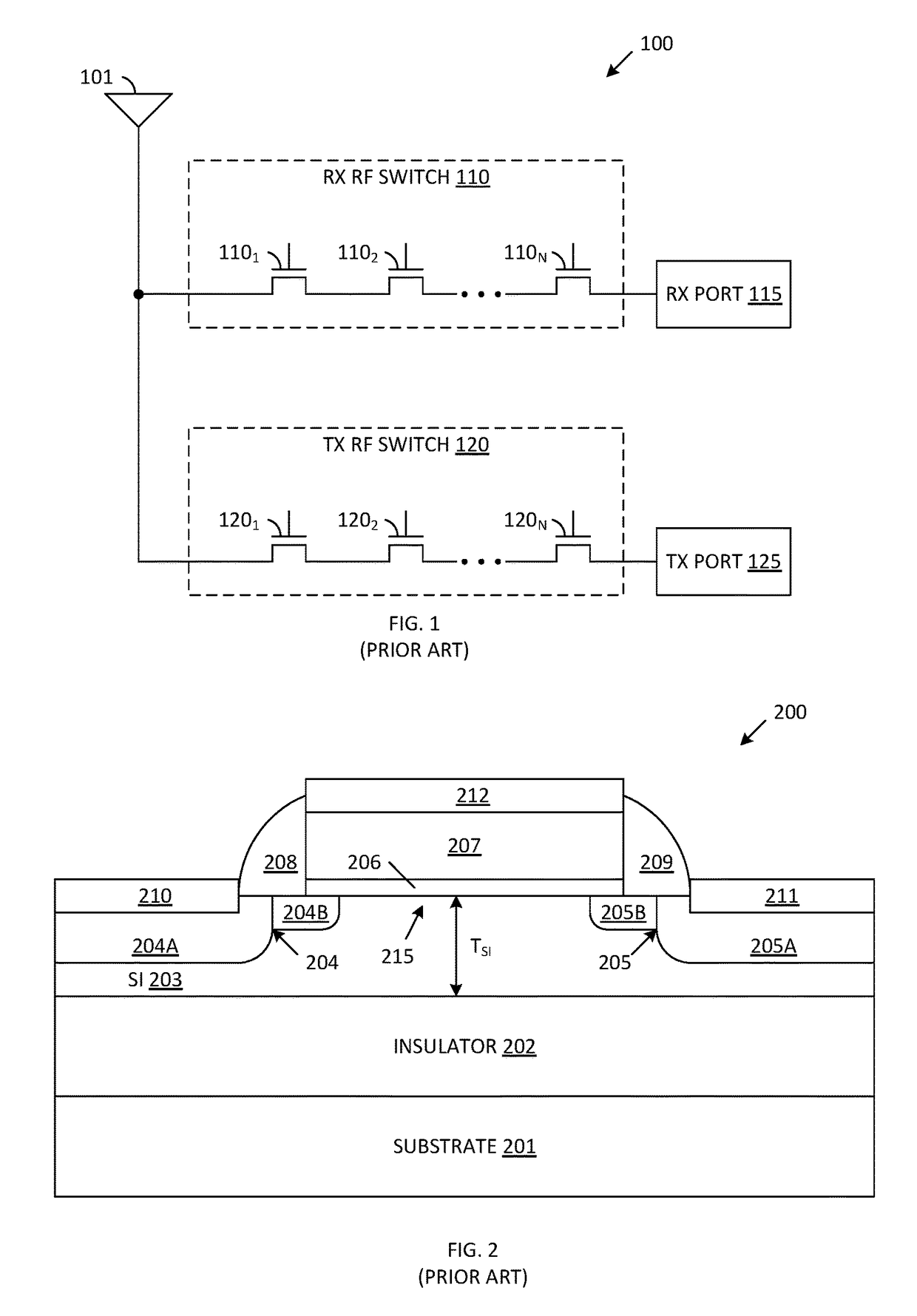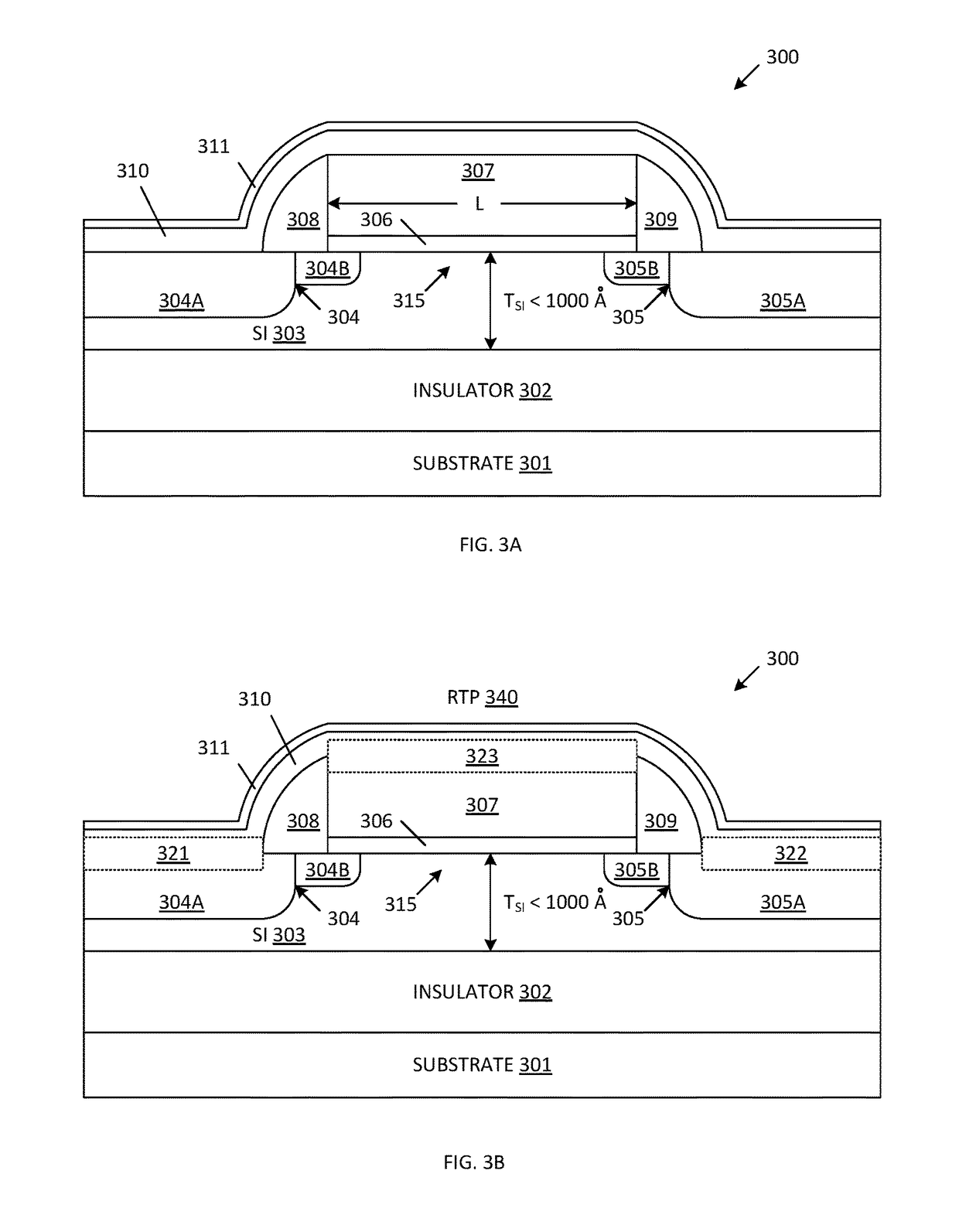Nickel silicide implementation for silicon-on-insulator (SOI) radio frequency (RF) switch technology
- Summary
- Abstract
- Description
- Claims
- Application Information
AI Technical Summary
Benefits of technology
Problems solved by technology
Method used
Image
Examples
Embodiment Construction
[0024]In general, the present invention implements an RF switch using a plurality of series-connected SOI CMOS transistors, each having a gate length of about 0.13 microns or more, and each having nickel silicide regions formed on their source and drain regions. Because each of the series-connected SOI CMOS transistors has a gate length of about 0.13 microns or more, these SOI CMOS transistors are capable of handling high RF powers, and exhibit the high breakdown voltages required to implement an RF switch. The nickel silicide regions advantageously contribute to a relatively a low on-resistance (RON) of the SOI CMOS transistors, while consuming a relatively small amount of the underlying silicon regions during their fabrication (when compared with the formation of titanium silicide or cobalt silicide). Thus, the nickel silicided SOI CMOS transistors of the present invention can be fabricated without raised source drain (RSD) integration. In addition, the SOI CMOS transistors of the...
PUM
 Login to View More
Login to View More Abstract
Description
Claims
Application Information
 Login to View More
Login to View More - R&D
- Intellectual Property
- Life Sciences
- Materials
- Tech Scout
- Unparalleled Data Quality
- Higher Quality Content
- 60% Fewer Hallucinations
Browse by: Latest US Patents, China's latest patents, Technical Efficacy Thesaurus, Application Domain, Technology Topic, Popular Technical Reports.
© 2025 PatSnap. All rights reserved.Legal|Privacy policy|Modern Slavery Act Transparency Statement|Sitemap|About US| Contact US: help@patsnap.com



